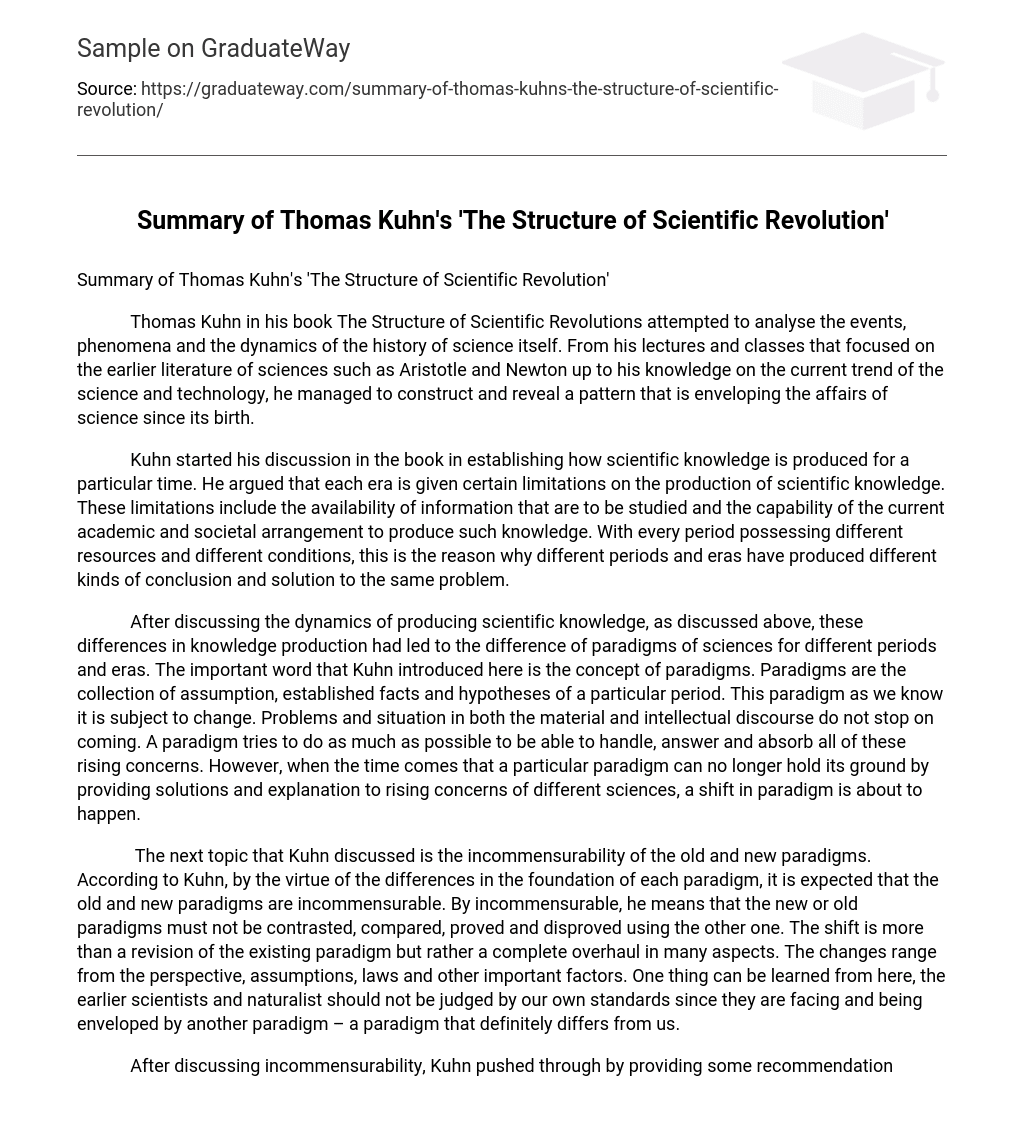Thomas Kuhn in his book The Structure of Scientific Revolutions attempted to analyse the events, phenomena and the dynamics of the history of science itself. From his lectures and classes that focused on the earlier literature of sciences such as Aristotle and Newton up to his knowledge on the current trend of the science and technology, he managed to construct and reveal a pattern that is enveloping the affairs of science since its birth.
Kuhn started his discussion in the book in establishing how scientific knowledge is produced for a particular time. He argued that each era is given certain limitations on the production of scientific knowledge. These limitations include the availability of information that are to be studied and the capability of the current academic and societal arrangement to produce such knowledge. With every period possessing different resources and different conditions, this is the reason why different periods and eras have produced different kinds of conclusion and solution to the same problem.
After discussing the dynamics of producing scientific knowledge, as discussed above, these differences in knowledge production had led to the difference of paradigms of sciences for different periods and eras. The important word that Kuhn introduced here is the concept of paradigms. Paradigms are the collection of assumption, established facts and hypotheses of a particular period. This paradigm as we know it is subject to change. Problems and situation in both the material and intellectual discourse do not stop on coming. A paradigm tries to do as much as possible to be able to handle, answer and absorb all of these rising concerns. However, when the time comes that a particular paradigm can no longer hold its ground by providing solutions and explanation to rising concerns of different sciences, a shift in paradigm is about to happen.
The next topic that Kuhn discussed is the incommensurability of the old and new paradigms. According to Kuhn, by the virtue of the differences in the foundation of each paradigm, it is expected that the old and new paradigms are incommensurable. By incommensurable, he means that the new or old paradigms must not be contrasted, compared, proved and disproved using the other one. The shift is more than a revision of the existing paradigm but rather a complete overhaul in many aspects. The changes range from the perspective, assumptions, laws and other important factors. One thing can be learned from here, the earlier scientists and naturalist should not be judged by our own standards since they are facing and being enveloped by another paradigm – a paradigm that definitely differs from us.
After discussing incommensurability, Kuhn pushed through by providing some recommendation on the establishment of the next paradigm. He argued that the next paradigm should be able to resolve and absorb the current problems and dilemmas of existing paradigm. He also argued that the new paradigm must retain the important aspects and tools that were used by the earlier paradigms such as its concrete problem solving capability. Most importantly, Kuhn emphasized that the new paradigm should be able to provide explanations and solution that will outnumber the successes of the earlier paradigms. The new paradigm should be a more effective tool in solving the puzzles of science.
All in all, the Structure of Scientific Revolutions had provided us a bird’s eye view to the dynamics, movements and patterns that is dominating the scientific discourse. With the help of Kuhn’s careful analysis, we had learned that science is not a universal, uniform and non-changing discourse. As a system of knowledge, we had learned that science, as much as any other fields or discipline is prone to adapt to the ever changing environment that it is tasked to define and analyse.
Works Cited
Kuhn, Thomas. The Structure of Scientific Revolution. 1996. University of Chicago Press. Accessed. 06 May 2010





